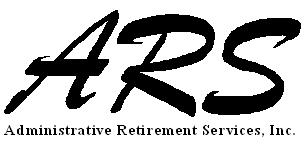Profit sharing can be its own plan, or it can include 401(k) contributions within the same plan. Profit sharing is an employer contribution that is allocated to plan participants. It does not require the company to have a profit to allocate. The contribution is discretionary. The profit sharing contribution can be allocated to employees different ways, the most common being: salary proportionate, integrated with social security, cross-tested. Participants earn rights to the profit sharing monies allocated to their retirement plan accounts according to a vesting schedule the company elects and is specified in the retirement plan document.
The Benefit
Enables an employer to provide retirement benefit to employees tax free. The company can claim a deduction on its return for the total profit sharing contribution. The employee does not pay taxes on the profit sharing contribution received until a future date when the monies are received as a cash withdrawal to him. A profit sharing plan can also help attract and retain talented employees.
Numerical Examples
Profit sharing can be salary proportionate or integrated with Social Security as outlined in the examples below.
Salary Proportionate
When a profit sharing contribution is allocated salary proportionate, the contribution to each eligible employee is the same percentage of their compensation. Below is an example of a profit sharing contribution equal to 7% of eligible employees’ compensation.
| Salary Proportionate | |||
| Compensation | Percentage of Compensation | Profit Sharing Contribution Allocation | |
| Owner | $265,000 | 7% | $18,550 |
| Employee 1 | $56,000 | 7% | $3,920 |
| Employee 2 | $43,000 | 7% | $3,010 |
| Employee 3 | $34,000 | 7% | $2,380 |
| Total | $27,860 | ||
Integrated with Social Security
A company retirement plan may take into consideration Social Security when allocating an employer contribution to eligible employees. This practice is known as integration with Social Security. Because Social Security is only paid on compensation up to a certain dollar amount, any employee with compensation over the Social Security Taxable Wage Base (TWB) will receive a large allocation of the employer contribution allocated in the company retirement plan to account for this. The TWB for 2015 is $118,500. The allocation below is simplified for visualization. For the calculation details, see More Detail below.
| Integrated with Social Security, 7% of Compensation | |||
| A | B | C | |
| Compensation | Compensation Over the TWB | Profit Sharing Contribution Allocation | |
| Owner | $265,000 | $146,500 | $21,055 |
| Employee 1 | $56,000 | $0 | $2,865 |
| Employee 2 | $43,000 | $0 | $2,200 |
| Employee 3 | $34,000 | $0 | $1,740 |
| Total | $398,000 | $27,860 | |
More Details
The example below provides the full four step calculation details for a plan integrated with Social Security.
| Integrated with Social Security, 7% of Compensation | |||||||||||
| Step 1 | Step 2 | Step 3 | Step 4 | F + G + I + K | |||||||
| A | B | D | E | F | G | H | I | J | K | L | |
| Compensation |
7% of Compensation |
Compensation Over the Social Security Taxable Wage Base | Compensation + Amount over the TWB | 3% of Compensation | 3% of Compensation over the TWB | % of Compensation; E / E Total | H * Amount Remaining to Allocate (not to exceed 2.7% of E) | % of Compensation; A / A Total | J * Amount Remaining to Allocate | Total | |
| Owner | $265,000 | $18,550 | $146,500 | $411,500 | $7,950 | $4,395 | 75.58% | $8,710 | 75.59% | $0 | $21,055 |
| Employee 1 | $56,000 | $3,920 | $0 | $56,000 | $1,680 | $0 | 10.29% | $1,185 | 10.29% | $0 | $2,865 |
| Employee 2 | $43,000 | $3,010 | $0 | $43,000 | $1,290 | $0 | 7.89% | $910 | 7.898% | $0 | $2,200 |
| Employee 3 | $34,000 | $2,380 | $0 | $34,000 | $1,020 | $0 | 6.24% | $719 | 6.23% | $0 | $1,740 |
| Total | $398,000 | $27,860 | $544,500 | $11,940 | $4,395 | 100.00% | $11,524 | 100.00% | $0 | $27,860 | |
| * The Social Security Taxable Wage Base is $118,500 in 2015. | $16,335 | Amount Allocated in Step 1 & 2 | |||||||||
| $11,524 | Amount Remaining to Allocate for Step 3 | ||||||||||
| $0 | Amount Remaining to Allocate for Step 4 | ||||||||||
Set Up This Plan
To determine if a CBP can be right for your company, or to setup this plan for your organization, please complete our Online Questionnaire.
You may also complete the questionnaire offline by downloading the form here and then faxing the completed form to our office.

